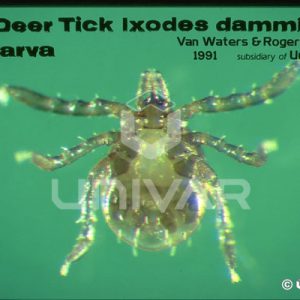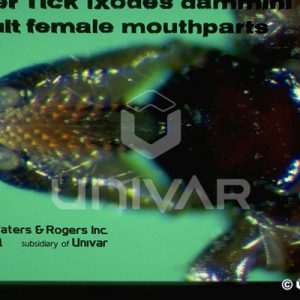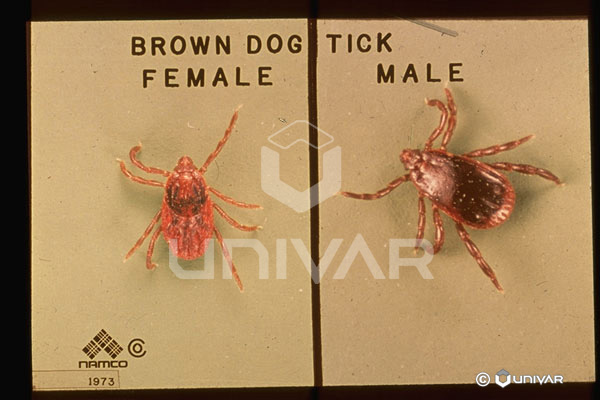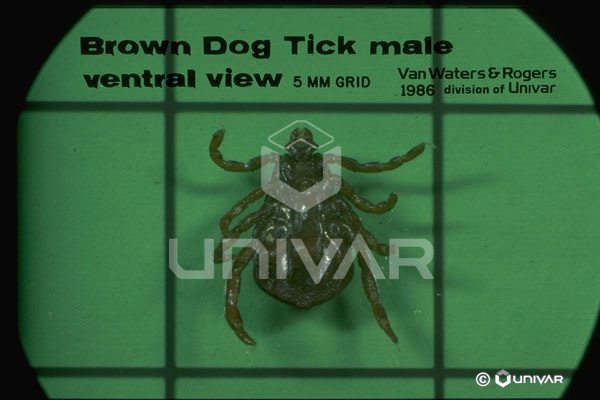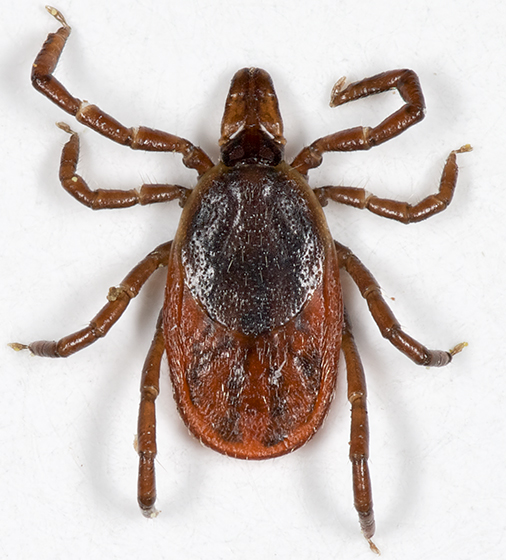
DEER TICK
Common Name: Tick – Ixodes ticks
Latin Name: Ixodes
Common Family Name: Hard ticks
Latin Family Name: Ixodidae
Other Names: Deer tick, western black-legged tick, Lyme Disease tick
Origin: There are two major species of Ixodes ticks in the United States, I. pacificus in the western U.S. and I. scapularis in the eastern U.S. These ticks are native to North America.
Biology: Hard ticks, in general, have a two-year life cycle, with eggs hatching to the 6-legged larva in the spring, these progressing to the second instar nymph stage which overwinters, and these progressing the following year to the adult tick. There is usually a single blood meal at each stage, with the tick remaining attached for several days to over a week. After fertilization by the male, and a blood meal, the female hard tick produces a single batch of up to several thousand eggs, and then she dies. These eggs are usually placed into a secluded crevice of some sort, and this may be within a structure. The engorged, gravid female becomes bloated to many times her original size. Ixodes ticks are the main vector of Lyme Disease and Ehrlichiosis throughout the United States. The bacteria that causes the disease is not present in the eggs, and the tick must become infected by feeding on an infected host. The larvae and nymphs may be more likely to feed on smaller, ground dwelling animals such as lizards or mice, and the adults on larger animals such as deer or dogs. As these ticks feed their saliva cements them to the skin of the host, making removal very difficult.
Identification: Hard ticks differ from soft ticks because their head and mouthparts stick out in front of the body, and are visible from above. A plate on the dorsal side called the scutum, is present, and on males, it extends over the entire abdomen, while on females it is very short and divides the abdomen into two areas. The Ixodes ticks are relatively small as adults, have a dark reddish mahogany color, and have prominent mouthparts that project well out in front of the head area. Under high magnification, on the ventral side of the abdomen, there is an “anal groove” near the anal opening, and on Ixodes ticks, this groove is placed in front of the anus.
Characteristics Important in Control: Tick control begins with prevention, by helping people understand what ticks look like, how to inspect for them, and how to remove them when found on clothing or the body. The use of repellents, light-colored clothing, and frequent inspection when in tick-infested habitats are important. Pets should be carefully inspected as well after activity in potential tick habitats. For tick infestations within a structure, careful applications of a residual pyrethroid to cracks and crevices that may harbor the ticks or their egg masses may be needed, and outdoor applications to turf and foliage around the perimeter of a property will kill ticks that are close to this urban environment.
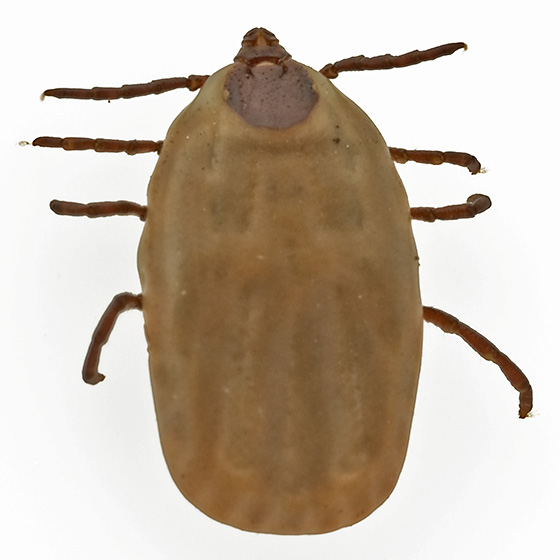
BROWN DOG TICK
Common Family Name: Hard ticks
Latin Family Name: Ixodidae
Other Names: Brown dog tick, kennel tick
Origin: This tick is native to North America, and it occurs most often in states with warm climates. It also occurs in Latin America in the tropical and subtropical areas.
Biology: The brown dog tick is a common pest of dogs, but possibly does not attack humans. However, it can be a serious nuisance in the home when pets are infested. It is potentially a vector of Rocky Mountain Spotted Fever. Hard ticks generally have a two-year life cycle, with eggs hatching to the 6-legged larva in the spring, progressing to the second instar nymph stage which overwinters, and progressing the following year to the adult tick. There is usually a single blood meal at each stage, with the tick remaining attached for several days to over a week. After fertilization by the male, and a blood meal, the female hard tick produces a single batch of up to several thousand eggs, and then she dies. These eggs are usually placed into a secluded crevice of some sort, and this may be within a structure. The engorged, gravid female becomes bloated to many times her original size.
Identification: The brown dog tick is very similar to several other species of hard ticks in the genus Dermacentor. Adults are about 3 mm long, flattened top to bottom, and are much wider at the posterior end than the front. There are tiny pits scattered over the top of the body, and the color is a somewhat uniform reddish brown. With high magnification, several other key characters distinguish this tick. By the anal opening on the underside of the abdomen, there is a small “anal groove” just behind the anus which is absent in Dermacentor ticks. In addition, the body plate directly behind the mouthparts, the “basis capituli”, has pointed expansions on each side of the Rhipicephalus.
Characteristics Important in Control: Tick control begins with prevention, by helping people understand what ticks look like, how to inspect for them, and how to remove them when found on clothing or the body. The use of repellents, light-colored clothing, and frequent inspection when in tick-infested habitats are important. Pets should be carefully inspected as well after activity in potential tick habitats. For tick infestations within a structure, careful applications of a residual pyrethroid to cracks and crevices that may harbor the ticks or their egg masses may be needed, and outdoor applications to turf and foliage around the perimeter of a property will kill ticks that are close to this urban environment.


